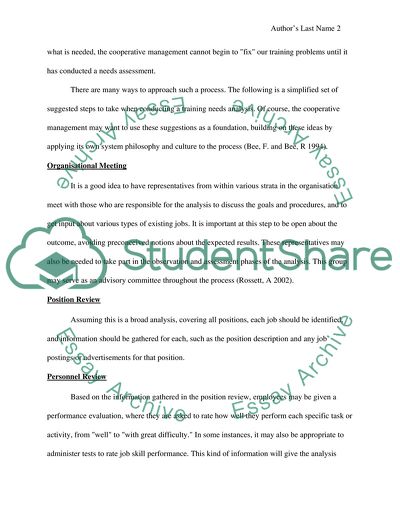Cite this document
(The Need for Training for Employees Essay Example | Topics and Well Written Essays - 2500 words, n.d.)
The Need for Training for Employees Essay Example | Topics and Well Written Essays - 2500 words. https://studentshare.org/human-resources/1705291-evaluate-the-relevance-of-training-need-analysis-to-the-effective-designdelivery-and-the-evaluation-of-training-activities-and-the-associated-implacation-for-a
The Need for Training for Employees Essay Example | Topics and Well Written Essays - 2500 words. https://studentshare.org/human-resources/1705291-evaluate-the-relevance-of-training-need-analysis-to-the-effective-designdelivery-and-the-evaluation-of-training-activities-and-the-associated-implacation-for-a
(The Need for Training for Employees Essay Example | Topics and Well Written Essays - 2500 Words)
The Need for Training for Employees Essay Example | Topics and Well Written Essays - 2500 Words. https://studentshare.org/human-resources/1705291-evaluate-the-relevance-of-training-need-analysis-to-the-effective-designdelivery-and-the-evaluation-of-training-activities-and-the-associated-implacation-for-a.
The Need for Training for Employees Essay Example | Topics and Well Written Essays - 2500 Words. https://studentshare.org/human-resources/1705291-evaluate-the-relevance-of-training-need-analysis-to-the-effective-designdelivery-and-the-evaluation-of-training-activities-and-the-associated-implacation-for-a.
“The Need for Training for Employees Essay Example | Topics and Well Written Essays - 2500 Words”. https://studentshare.org/human-resources/1705291-evaluate-the-relevance-of-training-need-analysis-to-the-effective-designdelivery-and-the-evaluation-of-training-activities-and-the-associated-implacation-for-a.


